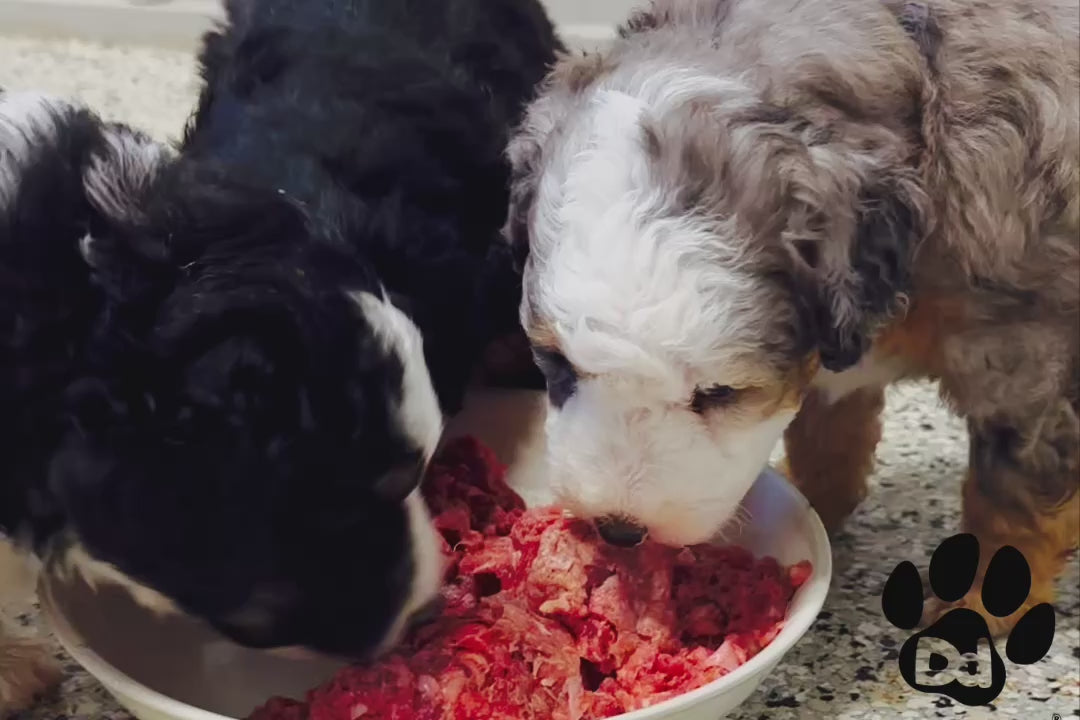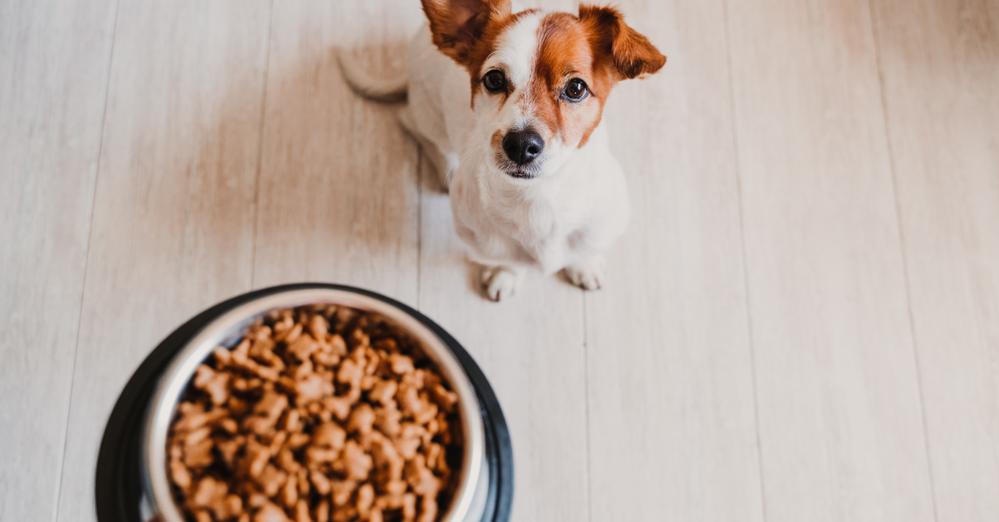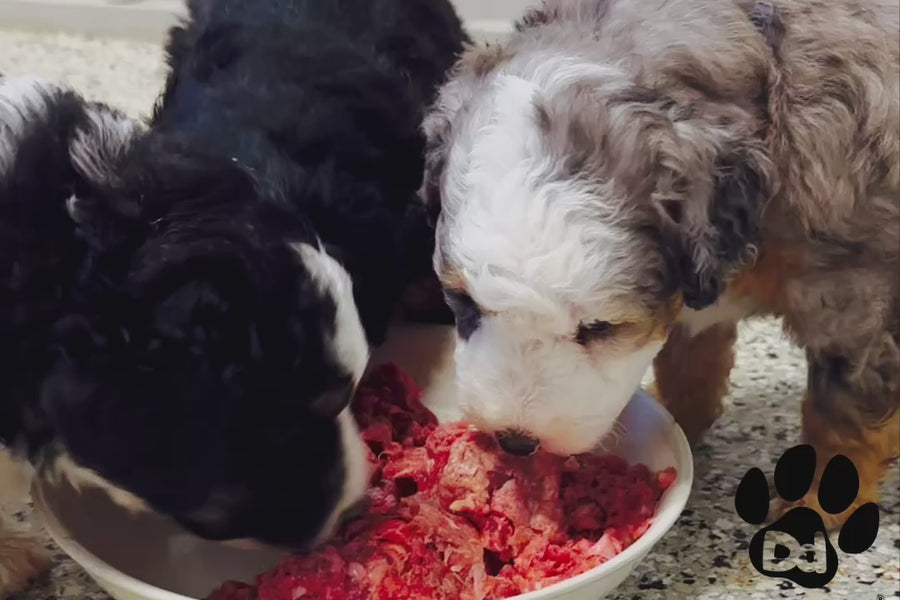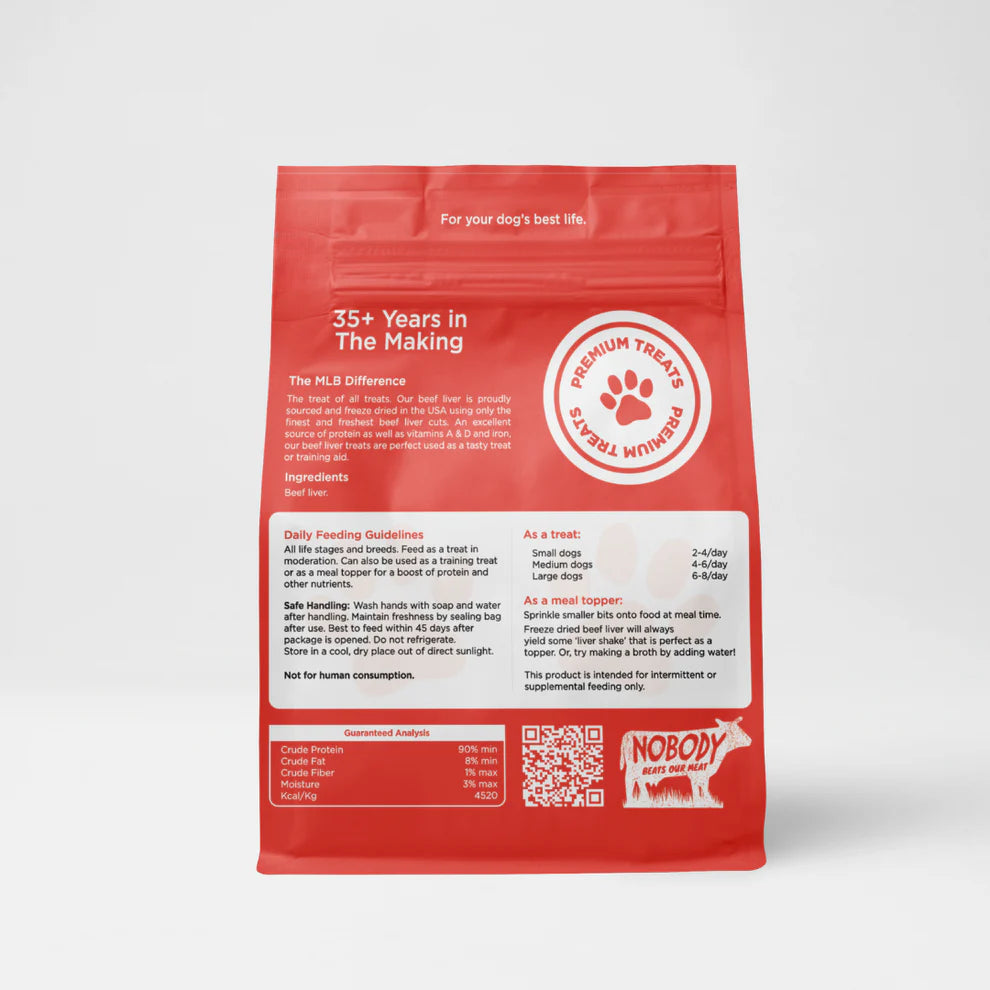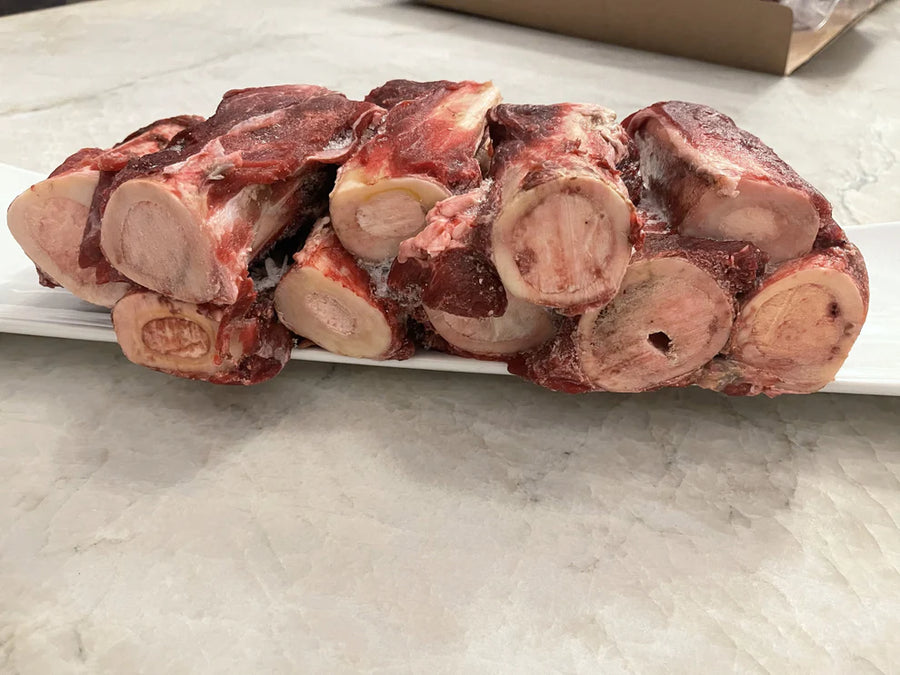Essential Tips for Bringing a Puppy Home
Welcoming a new furry family member is exciting and joyful. But, it also needs proper preparation and care. As you bring a puppy home, it's key to follow essential steps for a smooth transition. This guide will give you the insights and advice you need for a memorable and successful homecoming.

Key Takeaways
- Prepare your home by puppy-proofing and setting up safe spaces
- Gather the essential supplies for your new puppy's care and comfort
- Establish a consistent feeding schedule and provide the right nutrition
- Prioritize house training and socialization to foster a well-adjusted pup
- Stay vigilant about your puppy's healthcare and veterinary needs
Preparing Your Home for a New Puppy
Getting a new puppy is exciting, but you must prepare your home first. It's important to make your home safe and welcoming for your new pet. This means making sure your home is puppy-proofed to keep your furry friend safe and happy.
Puppy-Proofing Different Rooms
Begin by checking each room in your home for dangers. Make sure electrical cords are out of reach and hide small items that could be swallowed. Also, remove any toxic plants or chemicals that your puppy could get into.
In the kitchen, keep countertops clean and trash cans closed. Lock bathroom cabinets to keep your puppy away from harmful items.
Setting Up Safe Spaces
Choose special areas in your home for your puppy to play and rest. These spots should be safe and have their own toys, bedding, and water bowls. This helps your puppy feel safe and keeps them from getting into trouble.
Essential Safety Equipment
Get the right safety gear for your puppy. This includes a strong crate for travel and training, baby gates to block off rooms, and a good leash and harness for walks. Also, think about using baby-proof locks on cabinets and drawers, and cord protectors to stop chewing.
By puppy-proofing your home, you make a safe and loving space for your new pet. Always put your puppy's safety first.
| Puppy-Proofing Essentials | Benefits |
|---|---|
| Secure electrical cords | Prevents chewing and potential electric shocks |
| Childproof cabinets and drawers | Keeps hazardous items out of reach |
| Designated safe zones | Provides a secure and comfortable space for your puppy |
| Sturdy crate and baby gates | Aids in training and restricts access to unsafe areas |
"Puppy-proofing your home is essential to ensure your new furry friend's safety and well-being. It's a labor of love that will pay off in the long run."
Basic Supplies Checklist for Your New Puppy
Getting a new puppy is exciting, but it needs careful planning. Before your puppy comes home, make sure you have all the puppy supplies and dog essentials. This will help your puppy settle in easily. Here's a detailed pet shopping list to start with:
- High-quality puppy food and treats
- Sturdy food and water bowls
- A comfortable puppy bed or crate
- Soft, absorbent puppy pads or newspapers
- Durable puppy toys for chewing, playing, and mental stimulation
- Grooming essentials like a brush, nail clippers, and shampoo
- Collars, leashes, and ID tags for your pup's safety
- Potty training supplies like enzymatic cleaners and odor eliminators
- A secure puppy gate or barrier to restrict access to certain areas
- Veterinary supplies such as flea and tick prevention, deworming medication, and a first-aid kit
Having all the dog essentials ready is key to a smooth puppy introduction. Create a cozy, safe, and fun space for your puppy to grow and thrive.
| Puppy Supplies Checklist | Quantity |
|---|---|
| High-quality puppy food | 1 bag |
| Puppy treats | 1 bag |
| Food and water bowls | 2 sets |
| Puppy bed or crate | 1 |
| Puppy pads | 1 package |
| Puppy toys | 3-5 toys |
| Grooming essentials | 1 set |
| Collar, leash, and ID tag | 1 set |
| Potty training supplies | 1 set |
| Puppy gate | 1 |
| Veterinary supplies | 1 set |
With all these puppy supplies and dog essentials ready, you're set to provide a comfortable and safe home for your new puppy.
"Preparation is the key to a successful puppy introduction. Gather all the necessary pet shopping list items before your new companion arrives."
Creating a Comfortable Sleeping Area
Creating a cozy and secure sleeping area is key for your puppy's health and growth. From puppy crate training to picking the right dog bedding, we'll cover the basics of a comfy puppy sleep routine.
Crate Training Basics
Crate training helps with housebreaking and gives your puppy a sense of safety. Pick a crate that lets your pup stand, turn, and lie down easily. Use a soft, washable dog bedding to keep them cozy.
Bedding Selection Tips
For dog bedding, choose soft, durable, and easy-to-clean materials. Stay away from loose bedding that could be a suffocation risk. Instead, go for orthopedic or memory foam beds for extra support and comfort.
Establishing a Sleep Schedule
- Puppies need 18-20 hours of sleep daily, so a consistent puppy sleep routine is vital.
- Choose a quiet, dim area for your puppy's sleep spot. Use a cozy dog bedding and keep distractions low.
- As your puppy grows, adjust their sleep schedule to match their age and energy level.
Investing in the right dog bedding, puppy crate training, and a steady puppy sleep routine will make a comfy and safe sleep area for your new furry friend.
Bringing a Puppy Home Tips: First 24 Hours Guide
Bringing a new puppy home is exciting but also very important. The first 24 hours are key for your puppy's adjustment and your bond. Here's a step-by-step guide for a smooth transition for your new puppy adjustment.
When you arrive, make a calm and welcoming space. Show your puppy their puppy first day home areas, like where they sleep, eat, and go potty. Let them explore at their own speed, giving treats and praise for good behavior.
- Start a regular feeding schedule with small, frequent meals to prevent upset stomachs.
- Take your puppy on tours of their new home, meet family members, and watch interactions with other pets.
- Help your puppy relax by setting up a cozy sleeping area with a comfy bed and soothing sounds.
- Stick to a consistent potty routine, taking them out often and rewarding them for good potty behavior.
- Keep play and exploration limited in the first 24 hours to let your puppy adjust slowly.
Being patient and using positive puppy care tips is crucial during this time. With careful planning, you can make your new friend feel safe and ready to thrive in their new home.
https://youtu.be/EDnGC8q0g-o?si=1BNcFGlDOgK_LnCq
"The first 24 hours with a new puppy are crucial in establishing a strong foundation for their future development and your relationship."
Establishing a Feeding Schedule and Routine
It's key to give your new puppy a regular feeding schedule for their health and growth. A consistent routine ensures they get the right nutrients. This is vital for their growing bodies.
Choosing the Right Food
Finding the right puppy nutrition is very important. Choose high-quality, age-specific puppy food. It should meet your puppy's special dietary needs. Always ask your vet for the best puppy diet for your puppy's health and happiness.
Meal Timing and Portions
- Feed your puppy small meals often, about 3-4 times a day.
- Change the dog feeding schedule as your puppy grows. Increase food amounts and reduce meal times.
- Use a measuring cup to make sure your puppy gets the right amount of food.
Water and Hydration Needs
Keep fresh, clean water always available for your puppy. Watch their water intake and refill it as needed. This ensures they stay hydrated.
| Puppy Age | Feeding Schedule | Food Portion |
|---|---|---|
| 8-12 weeks | 3-4 meals per day | 1/2 - 1 cup per meal |
| 3-6 months | 3 meals per day | 1 - 2 cups per meal |
| 6-12 months | 2 meals per day | 2 - 3 cups per meal |
Every puppy is different, and their feeding needs can change. Always talk to your vet to find the best puppy nutrition and dog feeding schedule for your puppy.
House Training Fundamentals
Getting a new puppy is exciting, but it also means learning about house training. It's key for a happy home and your puppy's health. By learning the basics, you can teach your puppy good bathroom habits and reduce accidents.
Creating a routine is important. Puppies need to go out often, like every two to three hours. They also need to go after eating, sleeping, and playing. Pick a spot outside for them to go and use a command like "go potty." This helps them learn to go there.
- Establish a consistent potty schedule to prevent accidents
- Take your puppy out first thing in the morning, after meals, naps, and playtime
- Use a specific command like "go potty" to reinforce the desired behavior
Positive reinforcement is key for housebreaking. Give your puppy treats, praise, or their favorite toy when they go in the right spot. This shows them they're doing well and encourages more of the same. If they have an accident, don't scold them. Clean up the mess and watch for signs they need to go out.
| Puppy Potty Training Tips | Housebreaking Dos and Don'ts |
|---|---|
|
|

With patience, consistency, and a positive attitude, you can house train your puppy. This will help them become a well-behaved and happy companion.
Socializing Your New Puppy
Socializing your new puppy is key to their growth. It builds confidence and reduces fear. It also prepares them for good interactions with people, pets, and the world.
By introducing your puppy to new things safely, you help them succeed. This is important as they grow.
Introduction to Family Members
When you bring your puppy home, introduce them to everyone. Start with short, supervised meetings. Let your puppy set the pace.
Give treats and praise to make these meetings positive. As they get more comfortable, you can make the meetings longer and more complex.
Meeting Other Pets
- Plan for slow, supervised meetings with other pets at home.
- Keep the first meetings short and positive. Reward calm behavior with treats and affection.
- Make sure all pets have their own space and resources to avoid fights.
- Watch all interactions until you're sure your pets get along.
Building Confidence
Exposing your puppy to new things helps build their confidence. Start with small steps and use positive reinforcement. This can include:
- Getting your puppy used to different textures and places (like grass and stairs).
- Helping them get used to common sounds (like the vacuum).
- Going on short, fun trips to new places, like the park.
Remember, socializing your puppy should be slow and positive. Never push them into uncomfortable situations. With patience and consistency, your puppy will grow into a confident friend.
Healthcare and Veterinary Considerations
Getting a new puppy is thrilling, but it also means big responsibilities. It's key to keep your puppy healthy with regular vet visits and shots. This is vital for their health and growth.
Vaccination Schedule
Puppy shots are key to keep them safe from diseases. Talk to your vet to make sure your puppy gets all the shots on time. The usual shots include:
- Distemper, parvovirus, and adenovirus shots every 3-4 weeks, starting at 6-8 weeks of age
- Rabies vaccine at around 12-16 weeks of age
- Booster shots at 1 year and then annually or every 3 years, depending on the vaccine type
Routine Veterinary Check-ups
Regular vet visits are important to keep an eye on your puppy's health. Your vet will check them over, give advice on food and grooming, and suggest ways to prevent pests and diseases.
| Veterinary Visit | Recommended Frequency |
|---|---|
| Puppy Wellness Exams | Every 3-4 weeks until 16 weeks of age |
| Routine Check-ups | Annually or as recommended by your veterinarian |
By focusing on your puppy's healthcare and veterinary check-ups, you help them settle into their new home. This sets them up for a long, healthy, and joyful life.
Understanding Puppy Behavior and Body Language
Raising a puppy is an exciting journey. It's important to understand their behavior and body language. This helps in effective communication and training. Puppies use different signals to show their emotions and needs.
Recognizing these cues can help you build a strong bond. It also provides the necessary guidance. This is crucial for their development.
Common Stress Signals
Puppies may show stress signals like yawning, lip-licking, trembling, or avoiding things. These signs mean they're feeling overwhelmed or uncomfortable. They might need a break or a slow introduction to new things.
By noticing and responding to these signals, you can make your puppy feel secure. This helps build their confidence.
Positive Reinforcement Methods
Positive reinforcement is the best way to train and socialize your puppy. Rewarding good behavior with treats, praise, or playtime encourages them to do it again. This builds trust and cooperation.
This method creates a healthy relationship. It helps your puppy learn without stress.
FAQ
What are the essential tips for bringing a new puppy home?
Bringing a new puppy home is exciting. But, it needs careful planning. Make sure your home is safe for your puppy. Set up a cozy sleeping area and a regular feeding schedule.
Also, introduce your puppy to family and pets slowly. This helps everyone get along.
How do I puppy-proof my home?
Puppy-proofing your home keeps your puppy safe. Secure dangerous items and cover electrical cords. Create safe areas for your puppy to explore.
Think about each room's needs. The kitchen, living room, and bedrooms are all different.
What supplies do I need for a new puppy?
Get the right supplies for your puppy. You'll need good food and water bowls, a comfy bed or crate, and chew toys. Don't forget grooming tools and basic training treats.
Also, have a puppy-safe cleaning kit ready.
How do I create a comfortable sleeping area for my puppy?
Creating a cozy sleeping area is key. Start with crate training and pick the right bedding. Keep a regular sleep schedule.
Introduce the crate slowly. Make sure it's comfy and secure. This helps your puppy feel safe and relaxed.
What should I do during the first 24 hours with my new puppy?
The first 24 hours are important. Introduce your puppy to their new home, family, and pets. Start a feeding routine and play with them.
Be ready for accidents or anxious behavior. Stay patient and positive.
How do I establish a proper feeding schedule for my puppy?
Keep a regular feeding schedule for your puppy's health. Choose the right food and decide on meal sizes and times. Make sure they drink enough water.
Start a consistent routine. This makes your puppy feel secure and comfortable.
How do I house train my new puppy?
House training is key. Create a potty routine and use positive reinforcement. Be patient with accidents.
Take your puppy to their potty area often. Reward them for good trips. This helps house training go smoothly.
How do I socialize my new puppy?
Socializing your puppy is vital. Introduce them to family, pets, and new places slowly. This builds their confidence.
Expose them to different sights, sounds, and experiences. This makes them a well-adjusted companion.
What healthcare considerations should I be aware of for my new puppy?
Healthcare is a top priority for your puppy. Follow a vaccination schedule and see the vet regularly. Know common health issues.
Stay proactive with your puppy's health. This prevents problems and ensures their well-being.
How can I understand my puppy's behavior and body language?
Understanding your puppy's behavior and body language is crucial. Recognize stress signals and use positive reinforcement. Know their developmental stages.
Pay attention to their cues. This builds a strong bond and helps with training.


